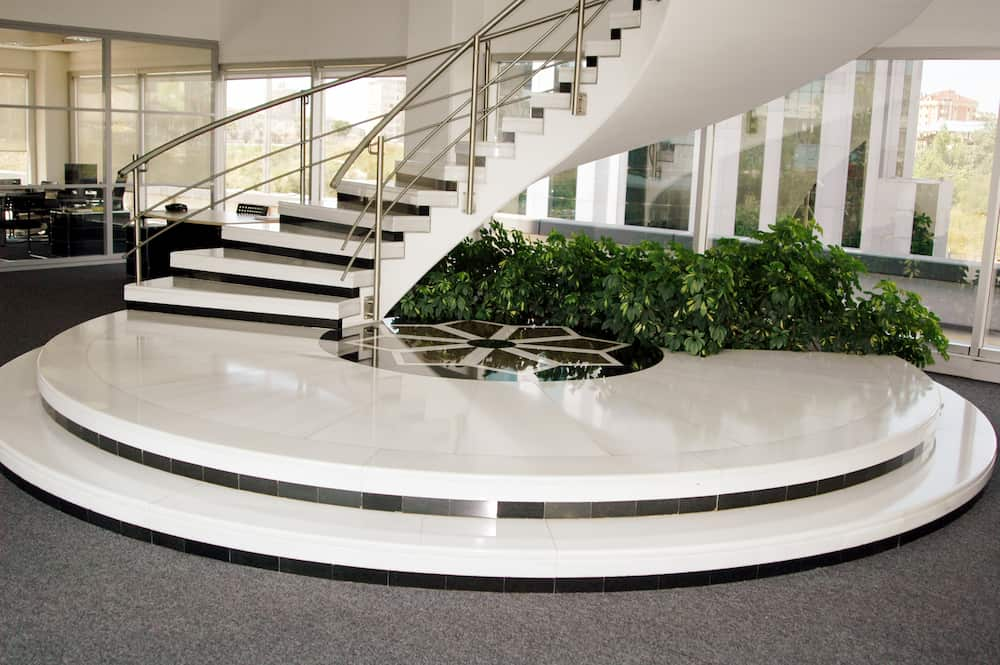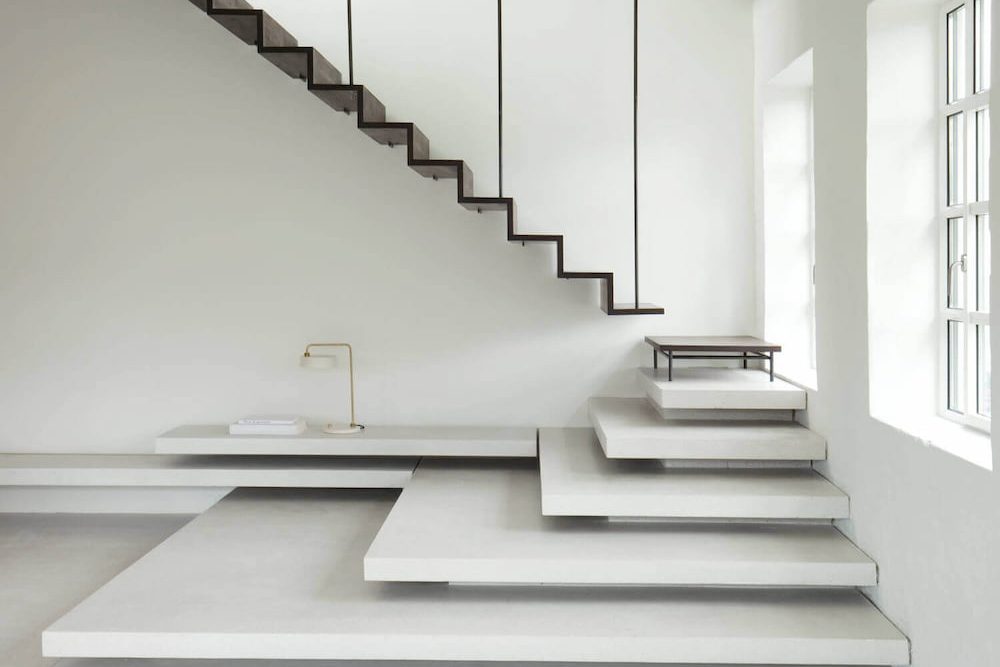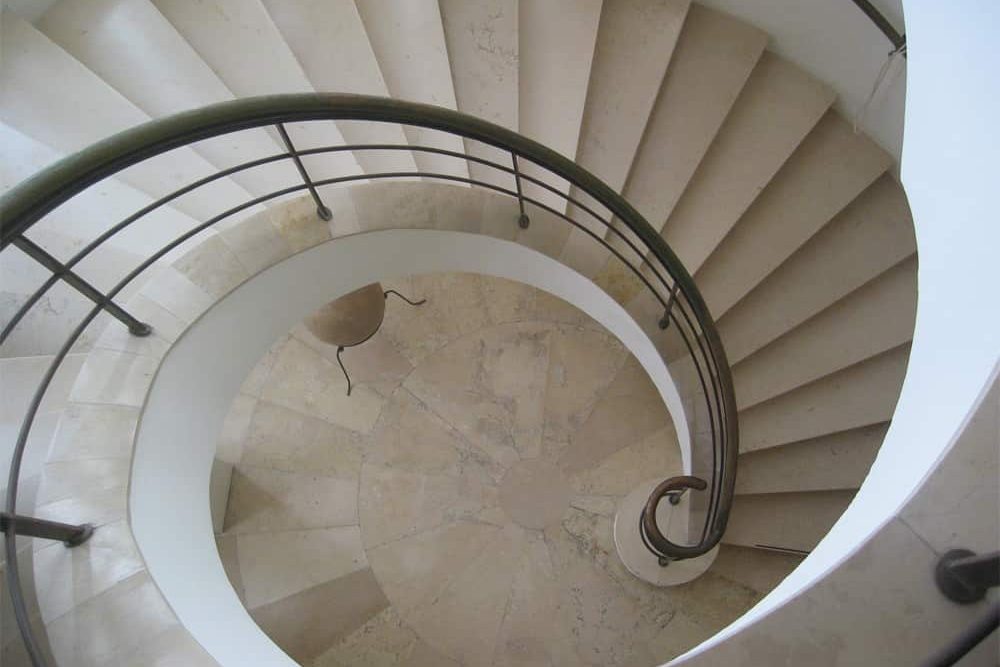Stairways must be coated with durable materials that go well with the surrounding area’s aesthetic, whether they are indoor or outdoor.
We have to find which ceramic vs. porcelain tiles are the ideal choice for the stair. Do you have trouble deciding which to pick? To assist you in making your choice, consider the following technical and aesthetic advice.
Step and stair tiles for use both inside and outside
No matter where they are, stairs and steps need to be able to support a lot of weight. They should have strong wear resistance, be non-slip, and be long-lasting. To avoid slippage, it’s crucial to select tiles with high load-bearing capacity, abrasion resistance, a non-slip surface, frost resistance, and an easy-to-clean surface, among other qualities.
Frost resistance, and as a result, a low absorption rate of 3% or less, are equally vital if you wish to utilize tiles on your outdoor steps.

What benefits might porcelain tiles provide when used as stair treads?
Both indoor and outdoor stairs frequently use porcelain tiles as a covering. These are the explanations:
You can locate porcelain tiles that flawlessly replicate wood or architectural concrete because they come in a variety of styles (so materials that have been very popular for the past few seasons).
They are very simple to install and clean and have a long lifespan.
With these tiles, you can easily create a chic and modern design without sacrificing toughness or security.
Stairs and steps with porcelain tiles:
They are a fantastic option for coordinating the design of the floors around them; use stair and step treads that have the same pattern or style as the base tile, like those found in the Batista line;
They don’t require any additional upkeep and can be cleaned with common cleaning supplies;
Unlike other finishes, they maintain their original appearance for many years and still look brand new;
The surface is non-slip.
Choose the appropriate design to make a stylish, reliable, and robust arrangement.
The phrases porcelain and ceramic are frequently used interchangeably by consumers as though they were synonymous. And this makes sense given that porcelain and ceramic tiles serve the same purposes, are put in the same ways, and basically share the same benefits and drawbacks when used as a wall or flooring surface.
Tile stores may claim that there is a significant distinction between the two at the same time, most often to protect the standing, cachet, and greater price of porcelain. Does the distinction between porcelain and ceramic tile actually exist?
Porcelain and ceramic tiles both fall within the broader category of tiles known as “ceramics,” which is made up of all rigid tiles that are made from natural, earthy clays and heated to a hardness. Porcelain tiles, however, have been given their own category in the contemporary tile market since they satisfy certain requirements.

Major Differences Between Ceramic and Porcelain Tile
According to the Tile Council of North America, all that matters in determining whether a tile is a porcelain or ceramic is whether it can pass a stringent set of water absorption standards. Surface glazing is typically applied to both ceramic and porcelain tile, making it difficult to distinguish between the two.
Porcelain Tile
Porcelain tile has a water absorption rate of 0.5 percent or less, according to the American Society for Testing and Materials (ASTM), part C373. The fired tile is weighed, then put in water for 24 hours before being boiled for five hours to test this. Then it is weighed once more. It is deemed porcelain tile if the weight increase caused by water absorption into the tile’s surface is less than 0.5%.
This density is achieved by using a unique kaolin clay mixture that is finer and purer than conventional ceramic clay. Quartz and feldspar are typically present in noticeable amounts. The firing process for porcelain tiles takes place at temperatures between 2,200 and 2,500 degrees Fahrenheit. For the buyer, it is usually sufficient to know that porcelain is a smooth, solid, fine-grained tile that is more water-resistant than regular ceramic tile.
Ceramic Tile Ceramic tile is characterized as using a coarser clay with a lesser ratio of fine kaolin clay, and it typically lacks some of the additions used in porcelain clay.
Ceramic tile is typically burned at temperatures no higher than 1,650 degrees Fahrenheit. If the ceramic tile is glazed, the differences between ceramic and porcelain tiles in terms of water infiltration are rather small.

Durability and Maintenance
Ceramic clays are less porous than porcelain clays because the latter is denser. Because of this, porcelain tile is tougher and more resistant to moisture than ceramic tile. It is thought to be more durable and better suited for heavy use than ceramic tile because of its through-body composition. When a porcelain tile is chipped, the color is still there throughout, making the damage almost undetectable. Porcelain requires only occasional sealing of the grout lines, making it a simple material to maintain.
Ceramic Tile Chip If you chip a ceramic tile, you’ll certainly notice it because the color underlying the top glaze is different. Because the clays used to manufacture ceramic tiles are less dense than the clays used to make porcelain tiles, they are a little more prone to breaking and cracking. In addition to sealing the grout lines, unglazed ceramic tiles may require sealants to be applied to the entire tile.
Porcelain tile is the best material for toughness and upkeep.
Porcelain tiles are stronger and more long-lasting than other types of tile since they are a harder substance with a consistent hue throughout.

Heat and Water Resistance
Ceramic and porcelain both have excellent heat resistance and are occasionally used for countertops.
Porcelain Tile
For outdoor use, porcelain tile is preferable to ceramic tile because it is denser, heavier, and more water-resistant, yet outdoor use is only advised in moderate regions. Porcelain tile is a terrific option for countertop surfaces because of its great heat resistance.
Ceramic Tile
While there are a few differences if the tile is glazed, ceramic tile is slightly more vulnerable to moisture infiltration. The ceramic tile’s face will withstand water as long as it is glazed and in good condition.
Water will not be able to pass through the unglazed areas of the tile’s back or side. Ceramic tile’s bottom is typically not in contact with water since it is embedded in thinset mortar. The sides of the tile that have been filled in with grout should also be protected from water infiltration.
Because of its superior heat resistance, ceramic tile is a wonderful material for countertops.
Porcelain tiles are the best for resistance to heat and water.
Because porcelain is slightly more water resistant than ceramic, it can be used outside in temperate climes. For outdoor spaces in any setting, ceramic tile is typically not advised.










Your comment submitted.